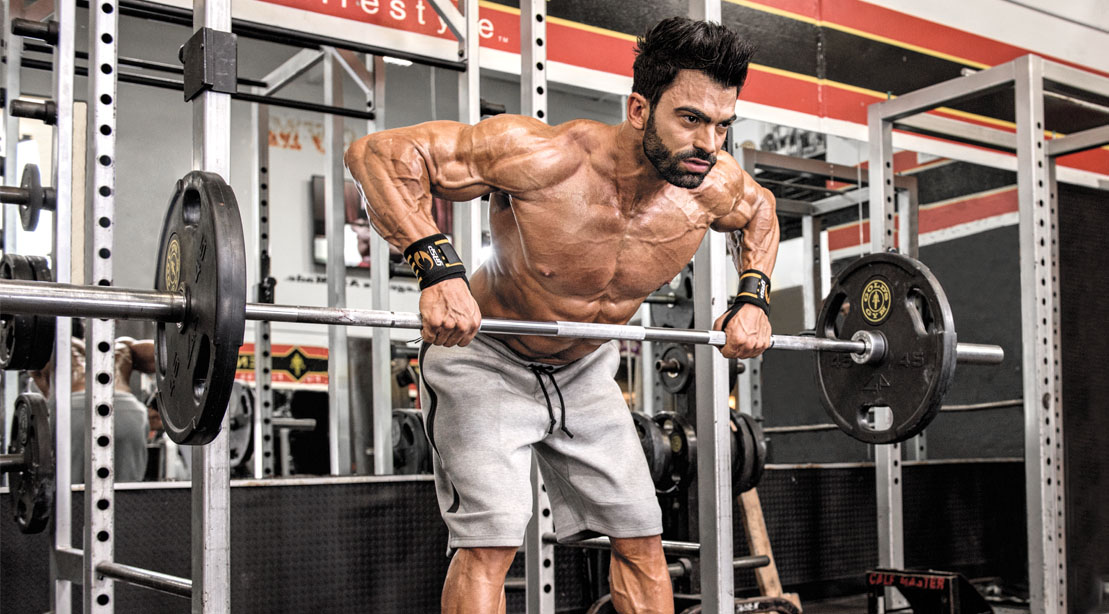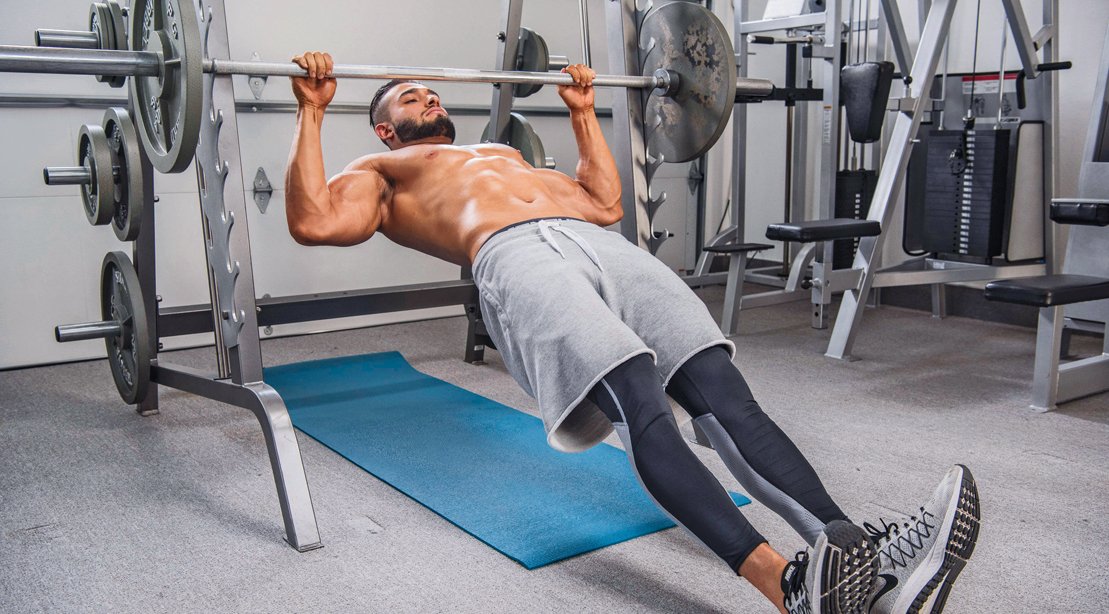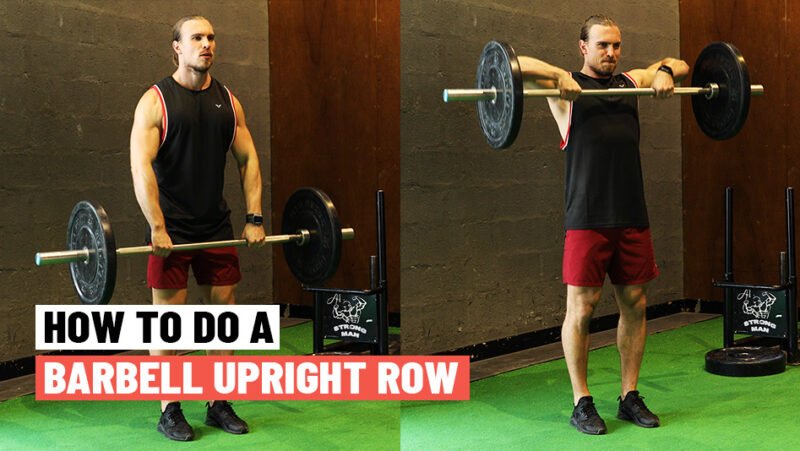The Pendlay Row is a barbell exercise targeting the upper back muscles, primarily the lats and traps. It’s performed bent over with a flat back and explosive rows.
The Pendlay Row, named after weightlifting coach Glenn Pendlay, emphasizes power and strength in the back a key area for athletes and fitness enthusiasts aiming to enhance their lifting proficiency. This compound movement not only engages the latissimus dorsi and trapezius but also recruits the rhomboids, rear deltoids, and biceps, making it a versatile addition to upper-body training routines.
The strict form, involving a horizontal back and a return of the barbell to the ground between reps, differentiates it from the traditional bent-over row and helps in maintaining a higher level of intensity and focus on the targeted muscle groups. It’s essential for those incorporating the Pendlay Row into their workout to prioritize form to maximize benefits and minimize the risk of injury. By including this effective exercise, individuals can expect noticeable improvements in posture, overall strength, and performance in other lifts.
Introduction To Pendlay Rows
The Pendlay Row is a compound exercise focused on building power and strength. It targets your upper body, emphasizing the back muscles. Unlike traditional rows, the Pendlay Row demands precision and explosive power with each rep. Fitness enthusiasts and athletes value this exercise for its effectiveness in strength programs.
Origins Of The Pendlay Row
Named after the weightlifting coach Glen Pendlay, the Pendlay Row was popularized in the early 2000s. Glen introduced this rowing variation to enhance explosive power for athletes. His method involves strict form, a horizontal back, and the weight returning to the floor each time.
Distinguishing From Other Row Variations
- Start from the floor: Each rep begins with the weight on the ground.
- Explosive movement: The lift is swift and powerful.
- Strict form: No momentum from the lower back.
- Horizontal back: The torso stays parallel to the ground.

Credit: stronglifts.com
Muscle Activation In Pendlay Rows
Muscle Activation in Pendlay Rows is the key to understanding how this powerful exercise benefits your body. This rowing variation, attributed to weightlifting coach Glenn Pendlay, emphasizes powerful pulls from a dead stop. Such a movement pattern ensures maximal recruitment of the targeted muscle fibers. Let’s dive into the specific muscles that the Pendlay Row engages to enhance strength and stability.
Primary Muscle Groups Targeted
The Pendlay Row primarily hits the muscles of the upper back. At the forefront of this are the latissimus dorsi, responsible for the sweeping width of the back. Accompanying the lats, the rhomboids and trapezius muscles get an intensive workout, critical for that thick, dense back development. Below is a table highlighting these primary muscles:
| Muscle Group | Function |
|---|---|
| Latissimus Dorsi | Shoulder Adduction & Extension |
| Rhomboids | Retraction of the Scapula |
| Trapezius | Scapular Elevation & Retraction |
Synergistic Muscles At Work
While the Pendlay Row spotlights the upper back, several secondary muscles lend a hand. The biceps brachii flex the elbow during the movement. Forearm muscles grip the bar tightly, engaging in isometric contraction. Even your lower back and core stabilize your torso throughout the exercise. Below is a list of these synergistic muscles:
- Biceps Brachii – Elbow Flexion
- Forearm Flexors – Grip Strength
- Erector Spinae – Spinal Support
- Core Muscles – Torso Stabilization
Implementing the Pendlay Row into your routine can result in a significant boost to your upper-body muscle activation and strength. These targeted muscles are crucial for posture, power, and overall back health!
Amplifying Overall Strength
Amplifying Overall Strength is crucial for anyone engaged in physical fitness or bodybuilding. One powerful exercise that stands out in achieving this goal is the Pendlay Row. This movement not only targets the back muscles but significantly contributes to overall power and muscular development. Let’s dive into how it enhances your compound lifts and benefits main lifts like the deadlift and squat.
Contribution To Compound Lifts
The Pendlay Row is a powerhouse for improving performance in other compound exercises. By incorporating it into your routine, you engage multiple muscle groups simultaneously. This action replicates real-life movements and activities, making it an integral part of strength training.
- Boosts core stability: The Pendlay Row requires a solid core, promoting tighter abs and improved posture.
- Enhances grip strength: It improves your ability to hold onto heavier weights, beneficial for all major compound lifts.
- Increases explosive power: The lift demands quick, powerful movements that translate into better overall explosiveness.
Benefit To Main Lifts Like Deadlift And Squat
Pendlay Rows directly impact the strength needed for heavy-hitting exercises like deadlifts and squats.
| Exercise | Impact of Pendlay Row |
|---|---|
| Deadlift | The row strengthens the back, crucial for a safe and powerful deadlift. |
| Squat | It builds lower back and hip strength, vital for maintaining squat form. |
By improving muscle coordination, the movement also enhances your overall lifting technique. This could help you lift heavier weights over time.
Remember, incorporating the Pendlay Row into your strength routine could significantly amplify your overall strength and performance in compound lifts.
Technique And Form Essentials
The Pendlay Row is a powerful compound exercise. It targets the back muscles. Technique is crucial for its effectiveness and safety. Let’s delve into the essentials of the Pendlay Row technique and form.
Proper Starting Position
A solid base is key. Position your feet shoulder-width apart. The bar should be over your shoelaces. Bend at the hips and knees. Your back must be parallel to the floor. Grip the barbell just outside your knees. Keep your spine neutral and head in line with your spine. Your arms should be straight, ready to pull.
Initial Setup:
- Feet: Shoulder-width
- Bar Position: Over shoelaces
- Hips: Bent
- Knees: Slightly bent
- Back: Parallel and straight
- Grip: Firm, just outside of knees
Execution For Maximum Efficiency
Begin the row with power. Keep your elbows close to your body. Pull the bar straight up to your lower chest. The bar should travel the shortest path. Your torso remains static. Only your arms move. Exhale as you lift. Complete the movement with control.
Key Execution Points:
- Elbow Position: Close to body
- Pull Path: Straight to lower chest
- Body Stability: Torso still, arms in motion
- Breathing: Exhale on lift
- Control: Maintain through the lift
Remember to reset after each rep. The bar should return to the starting position. Your form should remain intact. Consistency brings efficiency and gains. Practice these form essentials to master the Pendlay Row.
Injury Prevention And Safety Tips
Injury prevention and safety are vital when performing any exercise, including the Pendlay Row. This compound movement, renowned for its effectiveness in building back muscle and strength, comes with its share of risks if not executed with proper form and caution.
Common Mistakes To Avoid
To perform a Pendlay Row correctly, steer clear of these common errors:
- Incorrect posture: A rounded back can lead to spinal injuries.
- Excessive weight: Lifting more than manageable stresses the lower back.
- Inconsistent movement: Rowing unevenly can strain muscles.
- Partial lifts: Not using full range of motion limits muscle engagement.
- Fast tempo: Speedy reps reduce control and effectiveness.
Warm-up And Cool-down Practices
Proper warm-up and cool-down periods are key to minimizing injury. Apply these practices:
| Warm-up | Cool-down |
|---|---|
|
|

Credit: www.youtube.com
Integrating Pendlay Rows Into Training
The Pendlay Row, an explosive barbell exercise, targets your back muscles. It improves strength and power. Let’s delve into how it fits into your workout routine.
Creating A Balanced Workout Routine
A balanced routine involves working all muscle groups evenly. Pendlay Rows strengthen your back. They should get paired with exercises for other body parts. For instance:
- Chest: Bench Press
- Legs: Squats
- Arms: Bicep Curls
- Shoulders: Overhead Press
Include adequate rest, hydration, and nutrition for the best results.
Frequency And Repetition Guidelines
For beginners, aim for 2 to 3 sets of Pendlay Rows twice a week. This ensures recovery time. As you progress, increase to 3-4 sets 2-3 times a week.
| Experience Level | Sets | Reps | Frequency |
|---|---|---|---|
| Beginner | 2-3 | 8-12 | 2x weekly |
| Intermediate | 3-4 | 6-10 | 3x weekly |
| Advanced | 4-5 | 4-8 | 3-4x weekly |
Remember to focus on form over weight to prevent injury.

Credit: www.muscleandfitness.com
Frequently Asked Questions On Pendlay Row
What Is The Difference Between Pendlay Row And Bent Row?
The Pendlay row starts from the floor each rep, promoting explosive power, while the bent row keeps tension throughout by not resting the weight. Pendlay rows require strict form, targeting the upper back; bent rows allow more momentum, working back and biceps continuously.
What Is The Difference Between Pendlay Row And Low Row?
The Pendlay row involves lifting the barbell from the floor for each rep, emphasizing explosive power. The low row typically uses a machine or cables, focusing more on constant tension and control throughout the movement. Both target the upper back muscles but differ in execution and focus.
What Are Pendlay Rows Good For?
Pendlay rows target the upper back, enhancing strength and power. They improve posture and rowing performance, and stimulate muscle growth in the back and shoulders.
Is Pendlay Row Bad For Lower Back?
The Pendlay row, when performed with proper form, is generally not bad for the lower back. It’s crucial to use a weight that allows for correct technique to avoid strain.
Conclusion
Embarking on the Pendlay row journey enriches your lifting repertoire. It targets key muscles, fostering strength and improving posture. Dedicated practice promises notable gains. Incorporate this potent rowing variation and witness your fitness transformation. Start rowing towards a more powerful you today.


